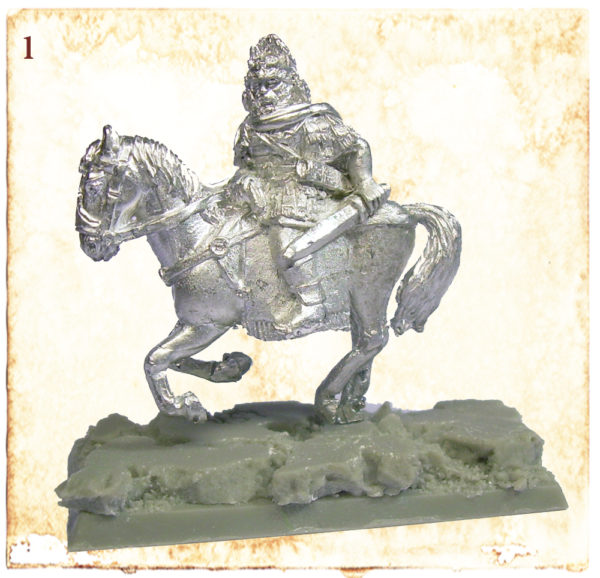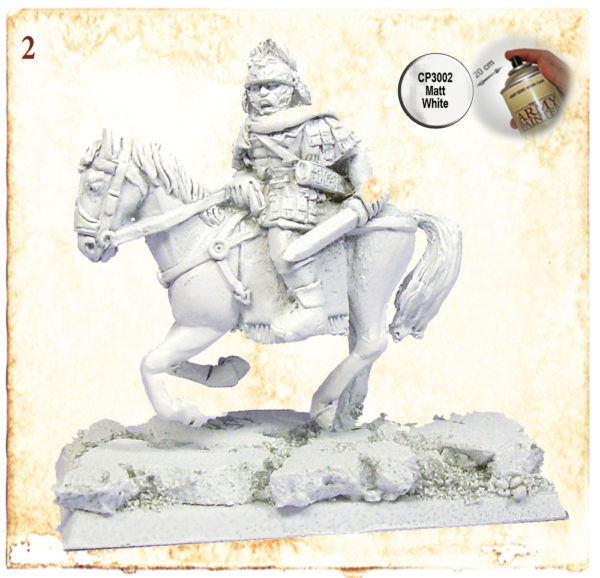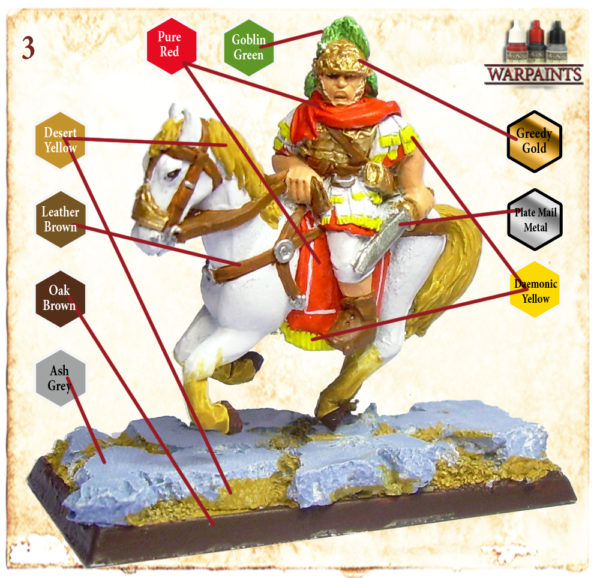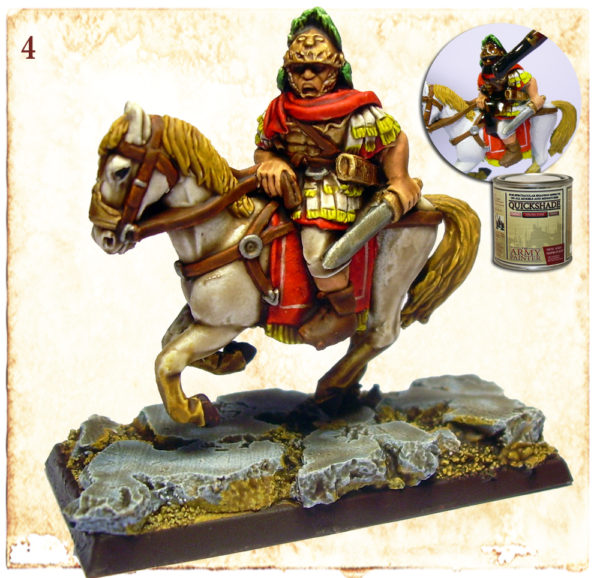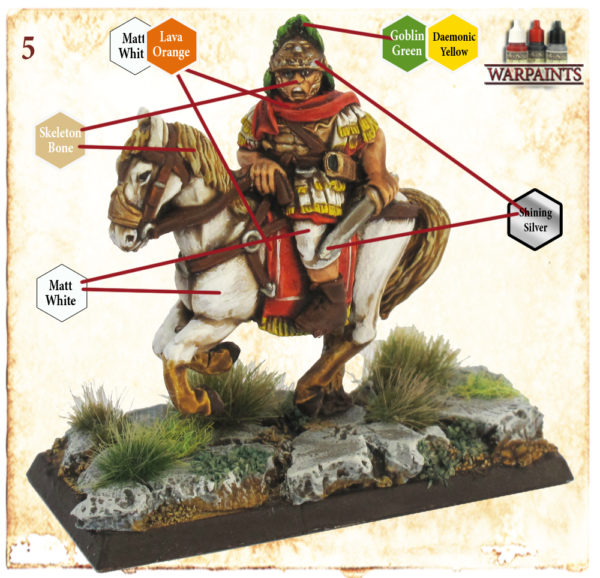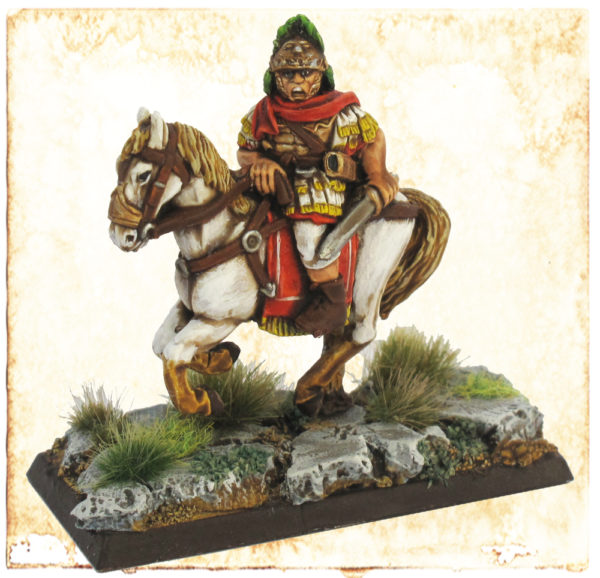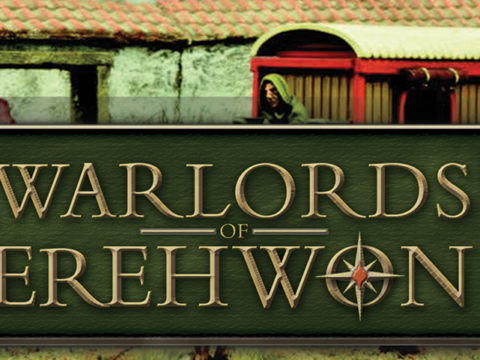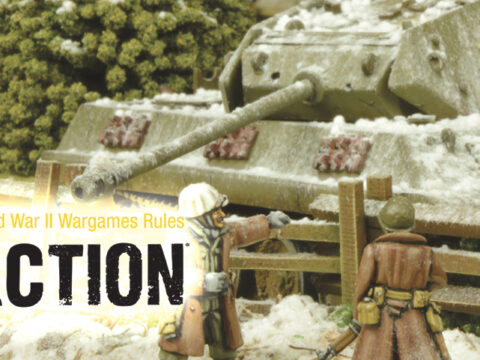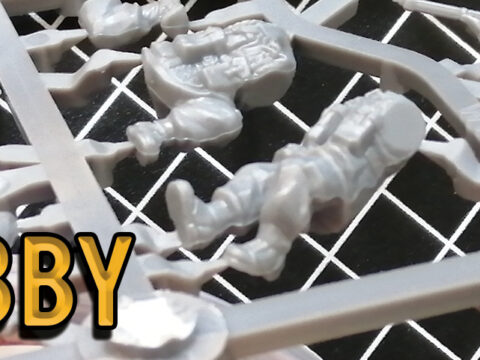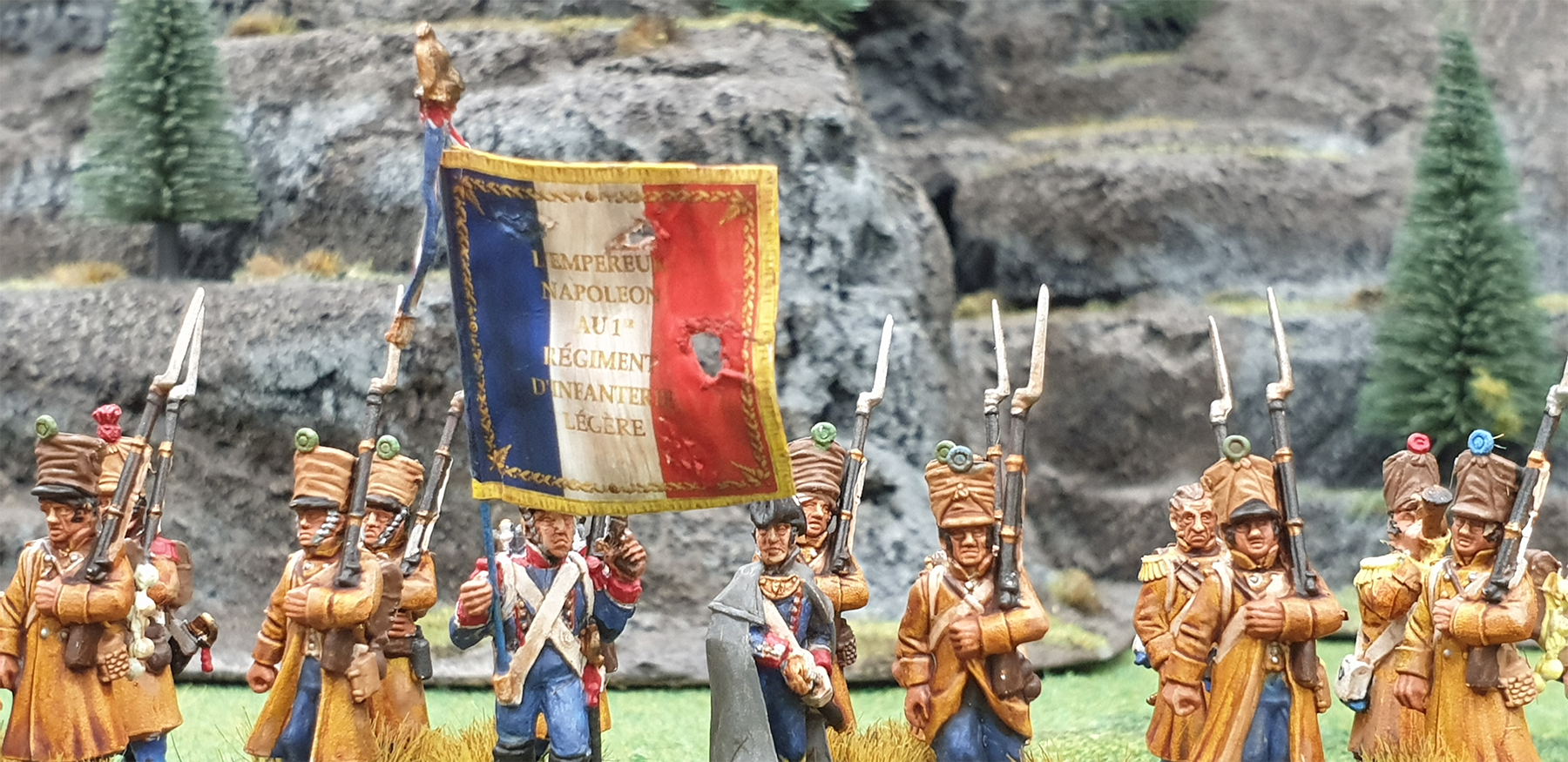by Jonas Faering (The Army Painter)
The Army Painter is all about getting your army on to the gaming table as fast as possible but without compromising the quality of the finished paintjob. Our renowned Army Painter Technique: Spray-Dip-Done has formed the basis for many fully painted armies out there. But sometimes you want your heroes and characters of the army to stand out and spending a few extra minutes on a final highlight is time well spent.
In this tutorial I have painted one of Warlord games’ Early Roman Officers as a mounted Tribune to lead my Hail Caesar Roman army.
Step 1: Assembly
First up I cleaned the mould lines from the miniature using files from the Curved Files Set – I like the fine points of these files to get into the tiniest crevices. Next I removed the horse from it’s metal base using a Precision Side Cutter and pinned the horse to a resin base from Scibor Miniatures – don’t forget to wash all resin parts in soapy water to remove the release agent used in the casting process or your painting won’t give very good results! Simply drill a hole in the hoof of the horse and into the base using the Miniature & Model Drill and glue in a small piece of brass wire or paper clip with a spot of Super Glue.
Step 2: Colour Primer spray
With the super glue all dried I went outside with my can of Colour Primer: Matt White. I could have chosen a coloured primer like Pure Red, but since the predominate colour was that of the white horse, I stuck to a Matt White primer. Remember that Colour Primers are very different to regular spray cans as they provide a hard-wearing single coat application and therefore you don’t need an undercoat first. This saves you time and money!
HOW TO USE COLOUR PRIMER SPRAYS:
Colour Primers have a unique formula combining the best elements of two sprays; primer and highly pigmented acrylic colour in one. To ensure a perfect result every time you use them we advice following these few steps:
1. Shake can well. Shake the can hard for a minimum of 1½ minutes. The pigment is heavy and need to blend, this takes time.
2. Max distance of 20cm. This is an important step. The maximum distance you should use a Colour Primer from is about 20 cm.
3. Move the can at all times. Using long, even burst where you constantly move the can across the model will give a perfect result.
All Colour Primers should be applied directly onto your miniatures like a normal primer – no need to undercoat first as with a normal colour spray!
Check our website for video tutorials on how to use a Colour Primer: www.TheArmyPainter.com
Step 3: Basecoat
The spray dries in minutes and I was ready to apply some paint to our brave hero. Using Warpaints and brushes from The Mega Paint set the Tribune was paint in flat colours (no highlights, outlining or anything – the Quickshade will take care of that later).
Helmet and sword pummel: WP1132 Greedy Gold
Red cloth and cloak: WP1104 Pure Red
Decoration: WP1107 Daemonic Yellow
Skin: WP1126 Barbarian Flesh
Sword and metal: WP1130 Plate Mail Metal
Horse mane and tail: WP1121 Desert Yellow
Laurels: WP1109 Goblin Green
Harness: WP1123 Leather Brown
And the base was painted with: WP1124 Oak Brown, WP1121 Desert Yellow and WP1117 Ash Grey.
At this stage I used a Wargamer: Regiment Brush and Wargamer: Character Brush.
I left the horse and parts of the Tribune’s armour the Matt White Colour Primer – no point wasting precious minutes…
Step 4: Quickshade
With the basecoat step done I took out my can of Quickshade Strong Tone and an old brush. Quickshade is a special formulated pigmented varnish designed to shade a whole miniature in on go. Using the Splash-On technique (check our website for video tutorials on how to use a Quickshade: www.TheArmyPainter.com) I shaded the miniature and base in a matter of a few minutes. It is startling how the glossy, muddy look of the miniature is transformed into a painted miniature you can be proud of by simply added the matt varnish!
Leave the model to dry and the Quickshade to fully harden for 24-48 hours before removing the gloss shine with a few very thin coats of Anti-Shine Matt Varnish from a distance of 30+ cm.
At this stage the model is ready for gaming alongside the rank and file legionaries. Oor we can take it a step further!
Step 5: Highlight
With the thin coats of Anti-Shine Matt Varnish the surface of the miniatures is ready for further painting. I added a few highlights using the Wargamer: Character Brush and Wargamer: Detail Brush.
Helmet and sword pummel: WP1129 Shining Silver
Red cloth and cloak: WP1106 Lava Orange + WP1102 Matt White mix
Sword and metal: WP1129 Shining Silver
Horse mane and tail: WP1125 Skeleton Bone drybrush with Wargamer: Small Drybrush
Laurels: WP1109 Goblin Green + WP1107 Daemonic Yellow mix
Horse: WP1102 Matt White
Skin: WP1125 Skeleton Bone
I finished the eyes using a Wargamer: Insane Detail Brush and moved on to complete the base with Battlefield XP: Wilderness Tufts and Battlefield XP: Swamp Tufts.
All-in-all about one hour’s work of painting time and my Early Roman Tribune is ready to lead Rome’s finest into battle.

